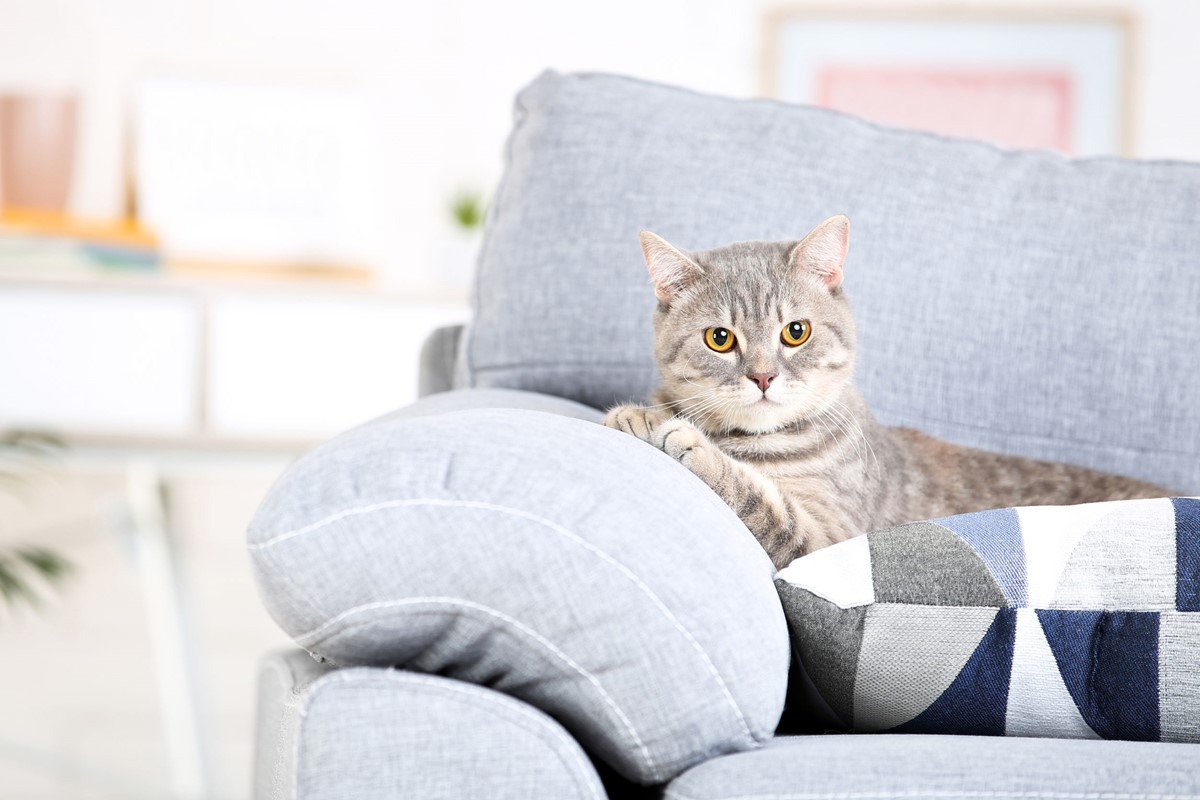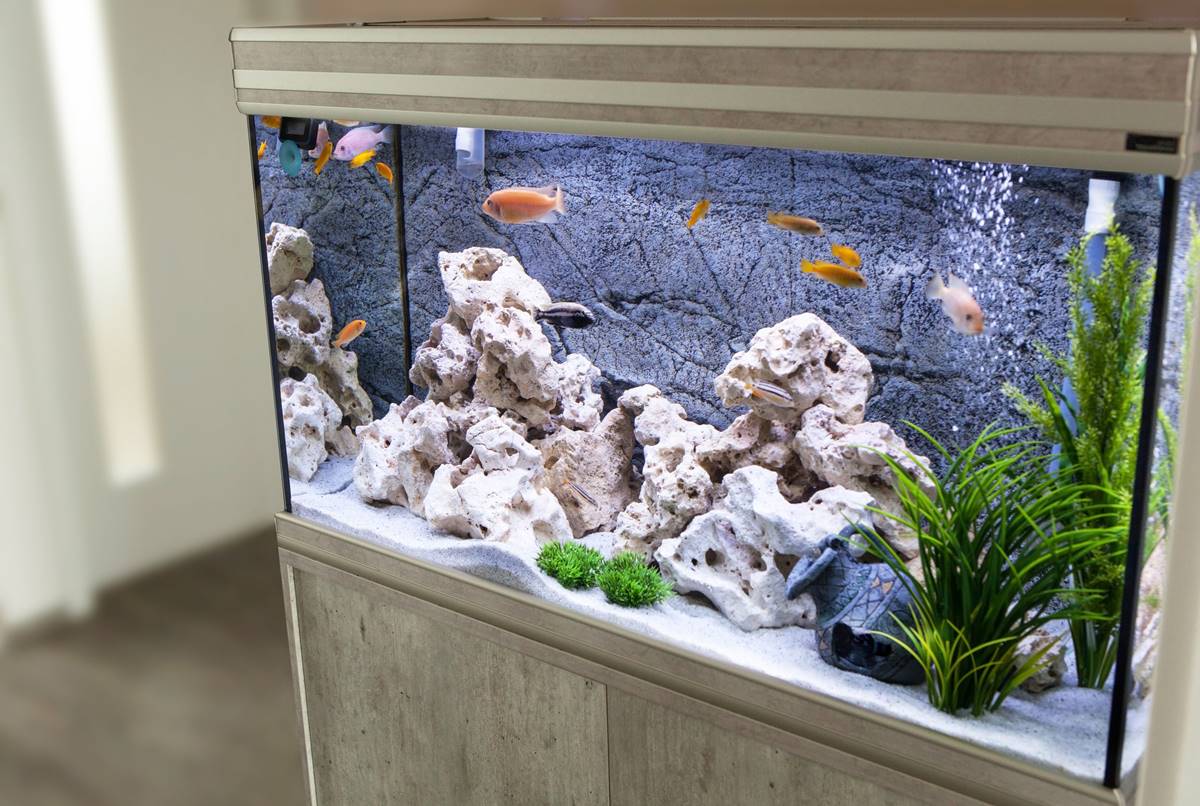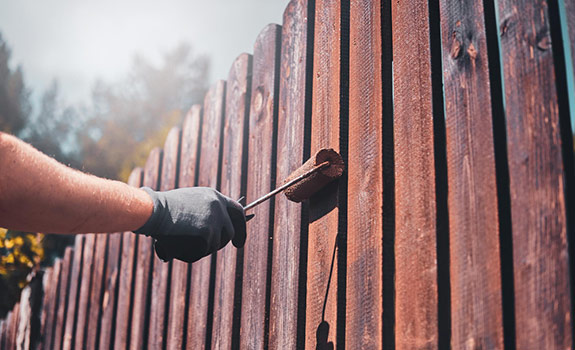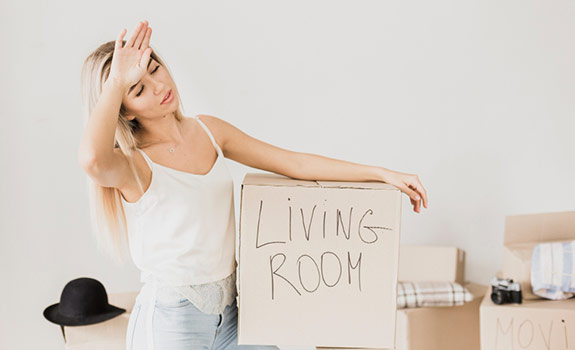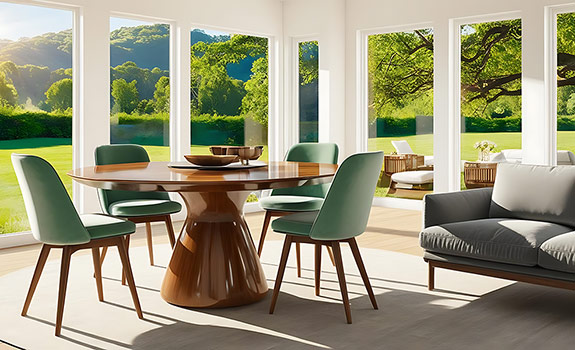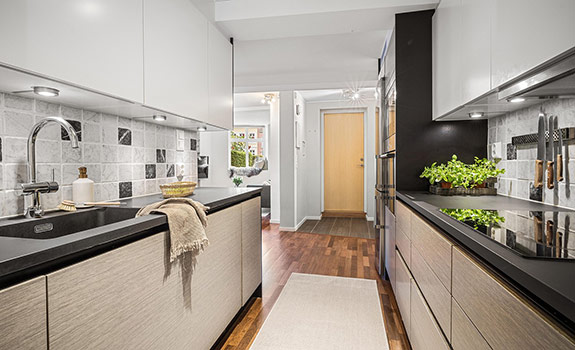Owning a pet can have significant health benefits for people of all ages, so it’s little wonder that so many homeowners have a furry or fishy friend!
Read on to find out how you can keep your home beautiful and accommodate your pets, too.
#1 Choose Upholstery Carefully
A layer of dog and cat fur over your furniture is not only unsightly, but pet dander can cause allergy problems, too.
When choosing furniture, opt for fabrics such as leather, damask, or synthetic fibers that are less likely to act as a magnet for pet hair. Avoid velvet, chenille, and velour, and steer clear of sheer, delicate materials such as silk that your furry friend’s claws could damage.
#2 Choose Chew and Scratch-Proof Furniture
Exposed wood, rattan, sisal, and wicker might look stylish, but they are all prime candidates for teething puppies or cats that want something to sharpen their claws on. Metal, plastic, and chrome furniture are a better bet.
If you have wooden or glass tabletops, be sure to put those items or furniture well away from windows or places where pets might be tempted to jump onto them.
To prevent damage caused by scratching, buy a high-quality scratching post or mat for your cat. There are lots of well-designed scratch posts on the market that can blend with home décor and look smart while being functional, too.
Sprinkle a little catnip on the scratching post to encourage your cat to use it and apply a pheromone deterrent spray to vulnerable areas of your furniture if your cat is still determined to sharpen her claws on it.
#3 Use Pet-Proof Flooring
Muddy paws and toilet training accidents can wreck expensive carpets and damage hardwood flooring. So, we recommend that you choose a flooring material that is pet-proof and easy to clean.
If you have your heart set on hardwood flooring, go for oak or mahogany. However, ceramic tiles, laminate flooring, or stone are a much better bet, as these materials are less prone to damage and will help to keep your pets cooler during hot weather.
#4 Keep Your Kitchen Hygienic
A beautiful new fitted kitchen can still look tidy and immaculate, even with pets in the house.
Set regular feeding times for your pets rather than leaving food bowls out all day, and tuck your furry friends’ water dish around the corner of a kitchen cabinet where it’s out of sight and won’t be kicked over.
If you keep your cat’s litter box in your kitchen or utility room, use a box with a hood to prevent odors and keep the kitty litter safely inside the box. Put the box somewhere where it’s not on display.
#5 Pick Pet-Friendly Walls
A wet dog can wreak havoc with your wall coverings, spraying muddy water everywhere when he shakes himself after a winter walk. Also, some textured wallpapers attract pet fur like Velcro, which makes it a nightmare to keep your rooms clean.
Stick to using semi-gloss or satin paint that can be wiped clean and that pet fur won’t stick to, and your walls will be much easier to keep clean.
#6 Use a Proper Aquarium Stand
Your regular home furniture is not suitable for holding an aquarium unless it’s a very small one.
A fish tank full of water, decorations, substrate, and fish is far too heavy to place on a sideboard or countertop. If the aquarium is not placed on a level, well-built surface, the sealant can twist or warp, leading to leaks or even causing the glass to crack. To keep your tank safe from any accident, sturdy options are a must especially if you’re housing a much larger tank.
#7 Site Your Aquarium Safely
Once you’ve chosen a suitable stand for your fish tank, you need to put the aquarium in a safe place.
Make sure that there’s plenty of space around the tank so that you can access the filter and tank interior for maintenance. You’ll need easy access to power sockets, too, so that you can plug in your heater, filter, and lighting unit.
Don’t put the tank where it will be exposed to direct sunlight, drafts, or external heating sources such as radiators.
Finally, site the stand on level ground where there’s no danger of the whole thing tipping over and avoid doorways and open areas where running children or pets could collide with the aquarium.
#8 Choose Pet Furniture Carefully
Keep your pets off your furniture by providing them with a comfy pet bed that coordinates with your room’s décor scheme.
Pet beds come in many different designs and high-quality fabrics, so you’re sure to find something that complements your home. Opt for a bed that has a removable, washable cover so that you can keep the bed smelling fresh and looking good.
#9 Use Pet-Safe Window Treatments
Most pets love to watch the world through the window or keep a lookout for their beloved owner returning from work.
Heavy fabric drapes are not a good choice, as they attract pet hair and grease. Feisty kittens are not averse to using your beautiful drapes and blinds as a climbing frame, and dangling cords from shades can present a danger of strangulation to pets and young kids, too.
During the daytime, fasten your drapes back out of harm’s way with tiebacks, and choose cord-free, wipe-clean blinds. Lightweight, machine-washable fabrics are the best choice for drapes, and it’s best to avoid fancy swags and ruffles that could be regarded as a playground for adventurous pets.
#10 Make Your Space Pet-friendly
Wagging tails and boisterous cats can easily cause mayhem in a home with low tables and bookshelves full of breakable items.
If possible, put your tables against a wall and well away from traffic lanes, and don’t risk displaying anything valuable that could be damaged in the event of an accident. It can be helpful to designate a pet-free zone where you can have your vulnerable items on show in safety; just remember to keep the door to that room firmly closed!
#11 Choose Pet-Safe Plants
Even houseplants can become a target for a curious cat or dog’s claws and teeth. And it’s not unheard of for cats to use large plant pots as litter boxes!
Try to put your houseplants in a spot where your cat or dog can’t reach them, and always opt for cat-safe plant species that won’t harm your pet in the event that Tibbles or Fido does make a meal of them.
Of course, there are plenty of artificial plants that you can use instead of real ones, which not only look beautiful, but they’re pet-safe too.
In Conclusion
You love your pets! You show them how much they mean to you through a myriad of ways, from taking them to the vet for routine vaccinations and checkups, learning how to clean your dog’s teeth at home, how to cut your cat’s nails, and spoiling them with grooming appointments, treats, toys, and snuggles.
However, you love your home too! With the help of our top tips and the ideas in our other blogs, you can lay out your home space with the safety of your pets and the cleanliness and style of your home in mind, too.



